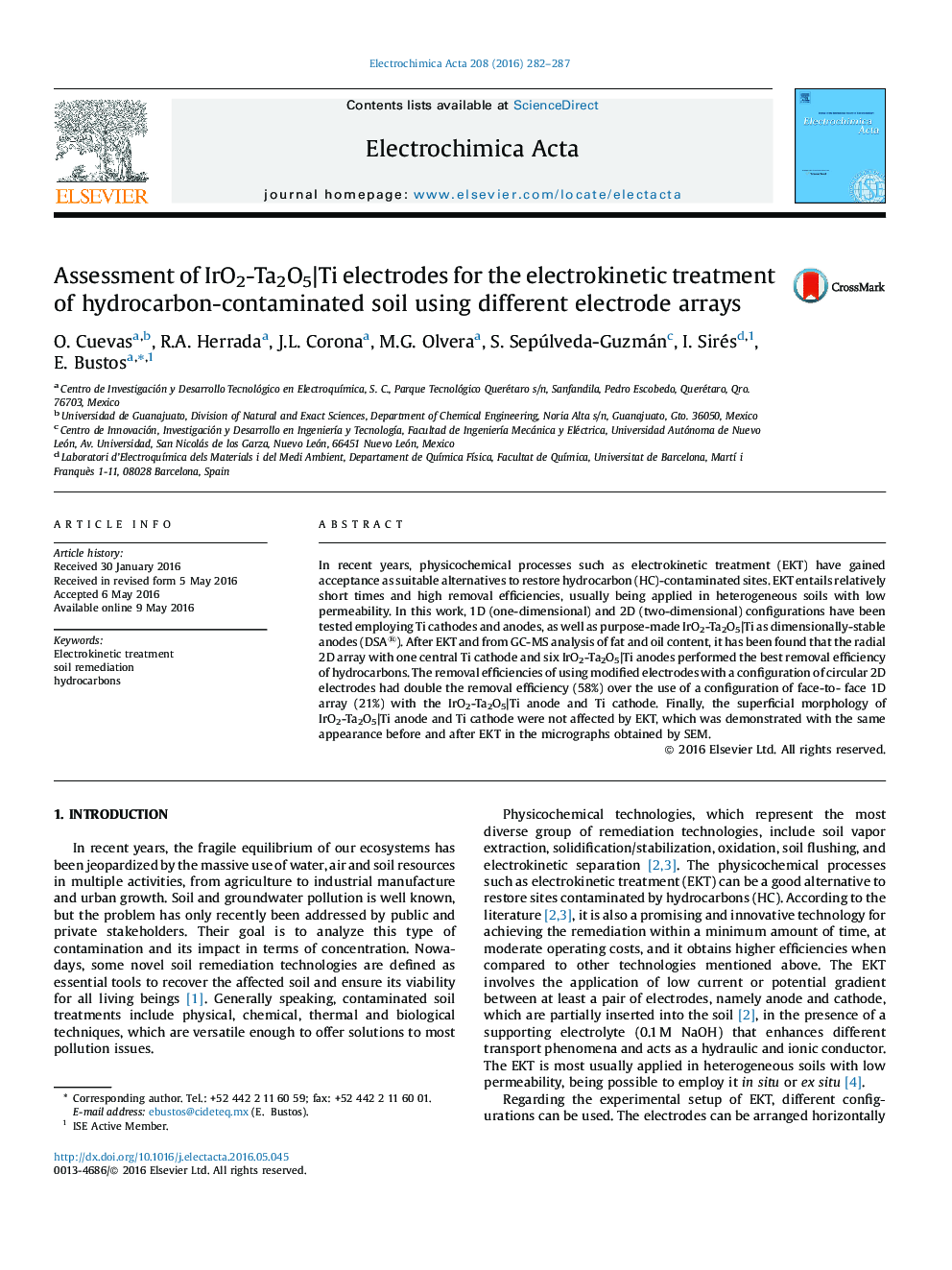| Article ID | Journal | Published Year | Pages | File Type |
|---|---|---|---|---|
| 182945 | Electrochimica Acta | 2016 | 6 Pages |
•1D and 2D configurations have been tested by employing IrO2-Ta2O5|Ti.•Radial 2D array showed 58% HC removal near the anode applying 30 V.•Applying 2.4 A cm−1 after 24 h of treatment was obtained the best removal.•IrO2-Ta2O5|Ti anodes contributed to obtain the major removal efficiency.•Morphology of the anodes has been analyzed by SEM-EDX.
In recent years, physicochemical processes such as electrokinetic treatment (EKT) have gained acceptance as suitable alternatives to restore hydrocarbon (HC)-contaminated sites. EKT entails relatively short times and high removal efficiencies, usually being applied in heterogeneous soils with low permeability. In this work, 1D (one-dimensional) and 2D (two-dimensional) configurations have been tested employing Ti cathodes and anodes, as well as purpose-made IrO2-Ta2O5|Ti as dimensionally-stable anodes (DSA®). After EKT and from GC-MS analysis of fat and oil content, it has been found that the radial 2D array with one central Ti cathode and six IrO2-Ta2O5|Ti anodes performed the best removal efficiency of hydrocarbons. The removal efficiencies of using modified electrodes with a configuration of circular 2D electrodes had double the removal efficiency (58%) over the use of a configuration of face-to- face 1D array (21%) with the IrO2-Ta2O5|Ti anode and Ti cathode. Finally, the superficial morphology of IrO2-Ta2O5|Ti anode and Ti cathode were not affected by EKT, which was demonstrated with the same appearance before and after EKT in the micrographs obtained by SEM.
Graphical abstractFigure optionsDownload full-size imageDownload as PowerPoint slide
